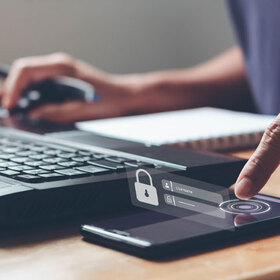Updates
Did you get hooked?
A realistic looking phishing email was sent to employees and staff for the purpose of strengthening UTSW security awareness and response.
Avoid geographical cyber targeting
Geo-targeted phishing occurs when cybercriminals execute customized attacks based on your geographic location.
Do you know how to spot a travel scam?
Keep security top of mind when you are planning to travel.
Look out for holiday cyberscams
The holidays are very appealing to hackers, which lead to an uptick in phishing and ransomware attacks.
Cyber Paranoid or Prepared?
Are you paranoid or are cybercriminals out to get you? Scammers pivot to a new strategy when the old methods no longer work. Be prepared and you have nothing to fear.
Enable security features like multifactor authentication to secure your personal accounts
Recently, a well-known technology company experienced a network security breach initiated through an employee’s personal Google account. The employee enabled password syncing via Google Chrome and saved their work credentials in their browser – synchronizing their work and personal passwords. The attackers compromised the personal account, and multiple corporate systems were accessed.
Working from Home Security Tips
With a vast majority of the workforce working remotely, employees have an increased responsibility to protect the sensitive information they may access through the day. Here are some tips to secure your home office.
Always Use Multi-Factor Authentication (MFA)
Multi-factor authentication (MFA) is a login process that requires you to verify your identity in more than one way. Use MFA to ensure you’re the only person who can access your account, even if your password is stolen.
Safeguard your data through ISAC
UT Southwestern departments have a responsibility to ensure that the technology they acquire first meets security and compliance requirements and is approved by the Information Systems Acquisition Committee (ISAC), which governs the acquisitions of information systems, software, and related equipment.
Email is the #1 Cyber Attack
Attacks from cybercriminals often start with a phishing email. Malicious links (URLs) and attachments found in emails can lead you to dangerous sites, putting your data, computer, and the UTSW network at risk. Click carefully to better protect UTSW and our patients.










